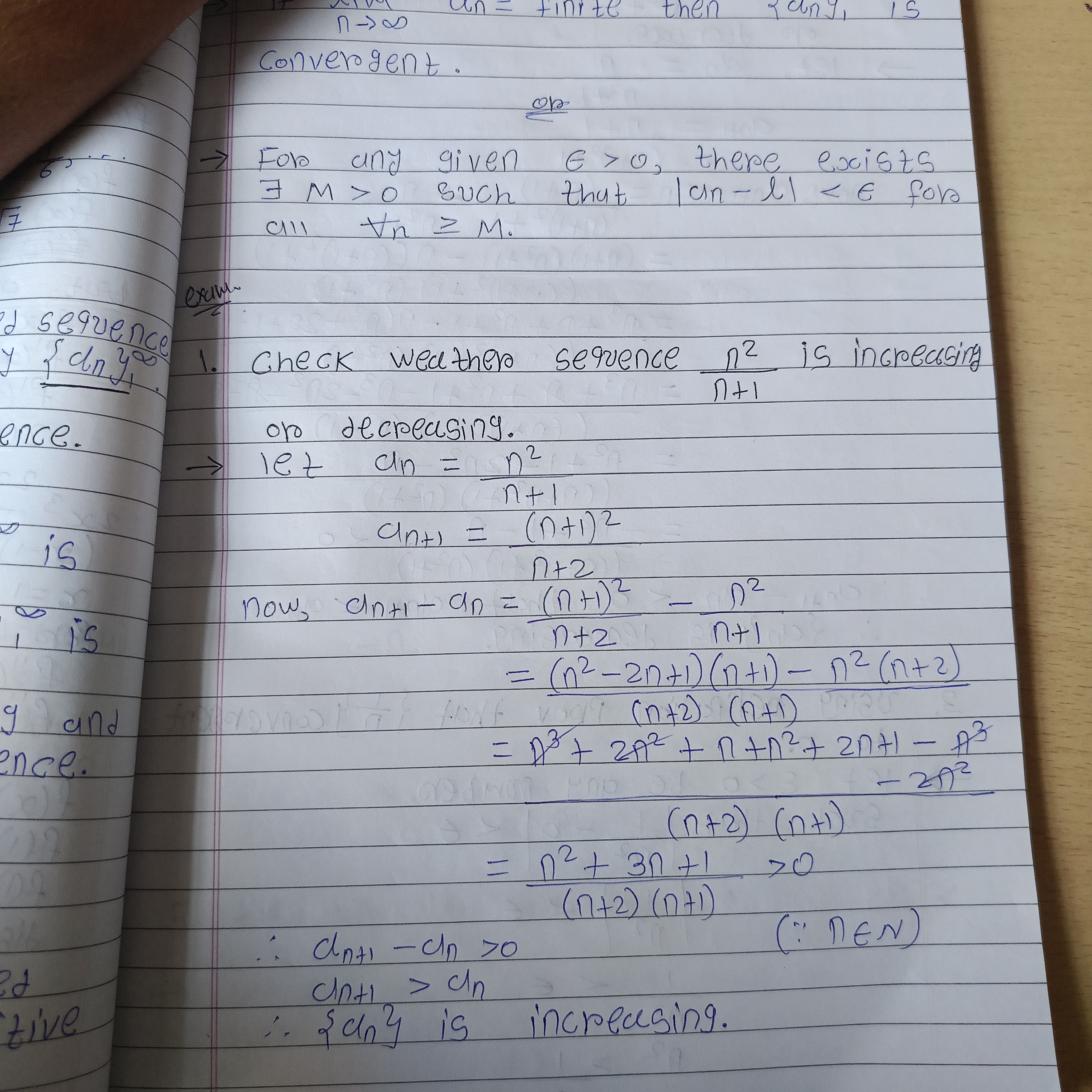Check whether the sequence n²/(n+1) is increasing or decreasing.

Understand the Problem
The question is asking to determine whether the sequence defined by the formula n²/(n+1) is increasing or decreasing. The provided work shows the calculation of its terms and checks the difference between consecutive terms to conclude the nature of the sequence.
Answer
The sequence $a_n = \frac{n^2}{n+1}$ is increasing.
Answer for screen readers
The sequence defined by $a_n = \frac{n^2}{n+1}$ is increasing.
Steps to Solve
- Define the Sequence
The sequence is defined as:
$$ a_n = \frac{n^2}{n+1} $$
- Find the Next Term of the Sequence
The next term in the sequence is:
$$ a_{n+1} = \frac{(n+1)^2}{(n+1)} $$
- Calculate the Difference Between Consecutive Terms
Now, calculate the difference:
$$ a_{n+1} - a_n = \frac{(n+1)^2}{n+2} - \frac{n^2}{n+1} $$
- Simplify the Expression
Rewriting the difference:
$$ = \frac{(n^2 + 2n + 1)(n+1) - n^2(n+2)}{(n+2)(n+1)} $$
- Combine and Expand Terms
Expanding both parts and simplifying:
$$ = \frac{n^3 + 3n^2 + 2n + 1 - (n^3 + 2n^2)}{(n+2)(n+1)} $$
- Final Simplification
The resulting expression can be simplified:
$$ = \frac{n^2 + 3n + 1}{(n+2)(n+1)} $$
- Evaluate the Sign for Increasing or Decreasing
To determine if the sequence is increasing, check if:
$$ a_{n+1} - a_n > 0 $$
Since both the numerator and denominator are positive for all $n \in \mathbb{N}$, we conclude:
$$ a_{n+1} > a_n $$
Thus, the sequence is increasing.
The sequence defined by $a_n = \frac{n^2}{n+1}$ is increasing.
More Information
The sequence increases because the difference between consecutive terms is positive for all natural numbers $n$. This means the terms of the sequence grow larger as $n$ increases.
Tips
- Not simplifying properly: Sometimes differences between consecutive terms are not simplified correctly, leading to incorrect conclusions. Always ensure to simplify fully.
- Incorrect sign evaluation: Forgetting to consider the intervals where the numerator and denominator are defined and positive or negative can lead to wrong results.
AI-generated content may contain errors. Please verify critical information